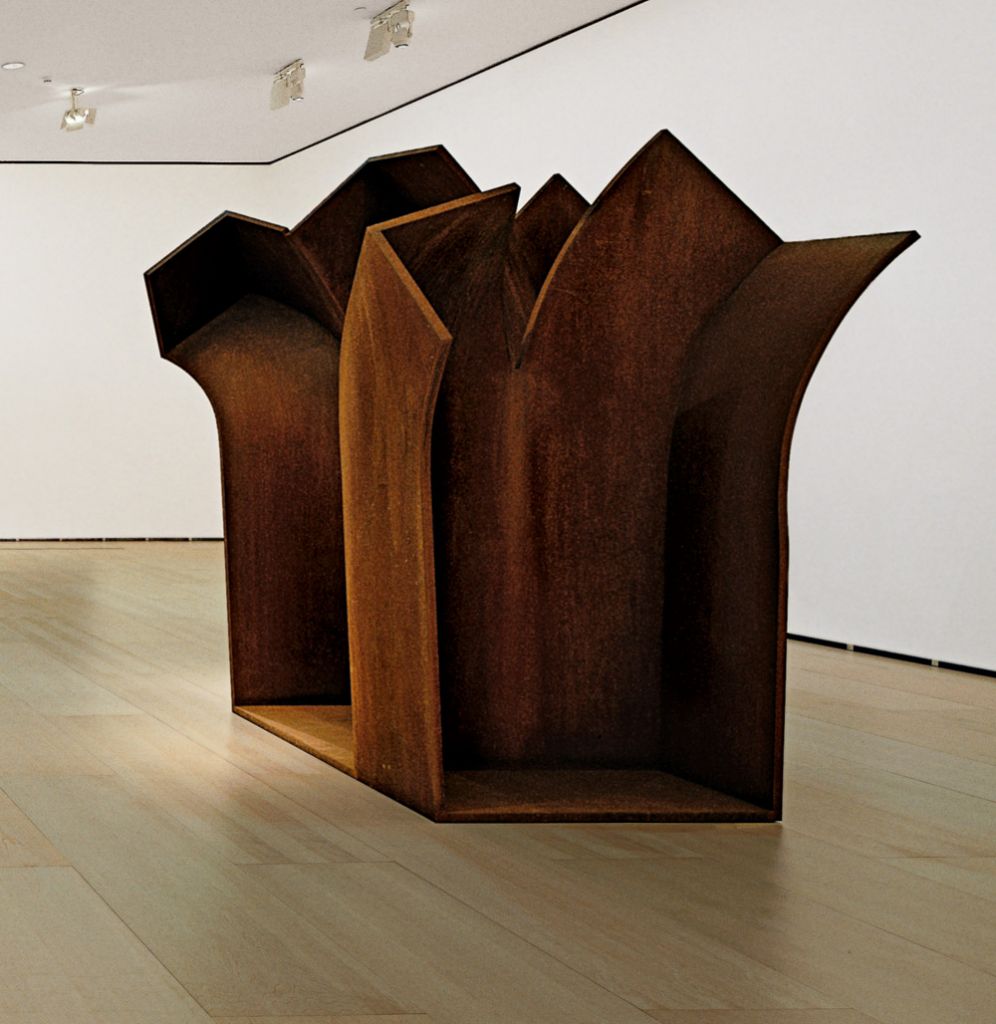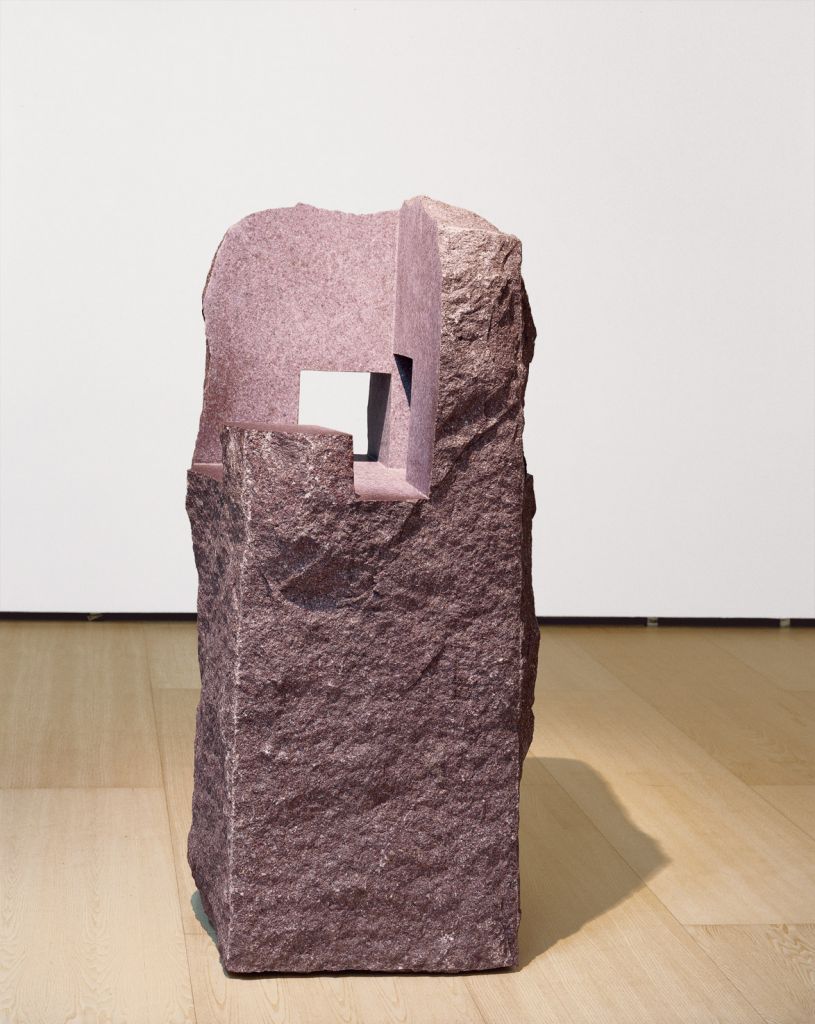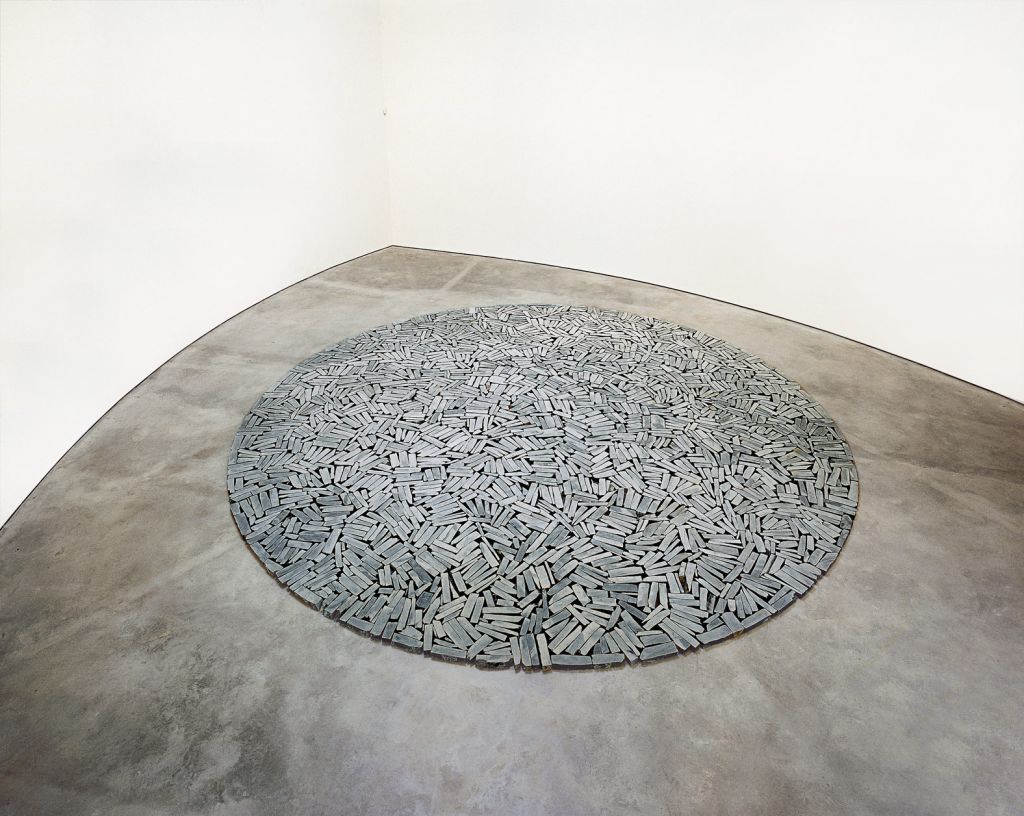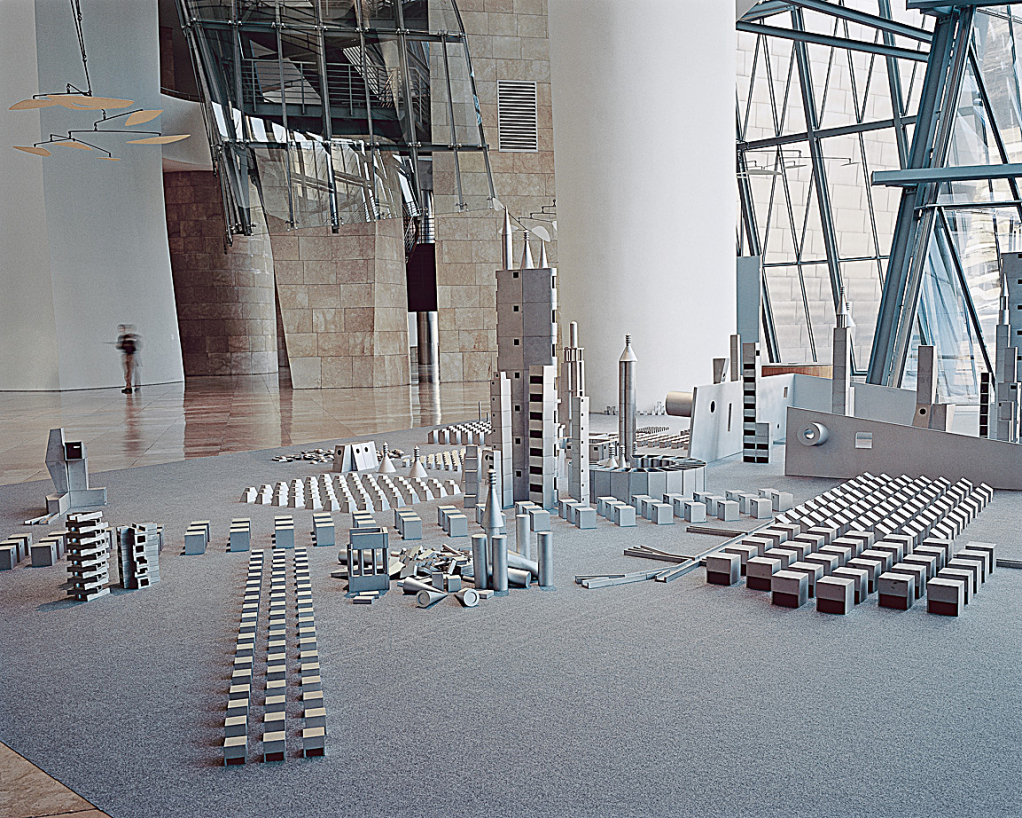Embrace XI
1996Steel260 x 88 x 108 cm
Eduardo Chillida studied architecture in Madrid from 1943 to 1947, before deciding to turn to painting and ultimately—after moving to Paris in 1948—to sculpture. His early architectural training is apparent in the underlying structure, attention to materials, and careful planning of spatial relationships that characterize his sculptures. Indeed, Chillida conceived of sculpture in relation to architecture: "To construct is to build in space. This is sculpture, and generally speaking sculpture and architecture," he declared.[1] Over the course of five decades, he established himself as one of the most important Basque artists of the 20th century and an internationally recognized figure in postwar sculpture, leaving behind a rich legacy in monumental, site-specific public sculptures as well as more conventionally sized works.
The materials Chillida turned to consistently informed his investigations of conceptual questions and metaphysical concerns. His early sculptures in Paris were executed in stone and plaster—materials suited to his study of archaic works in the Louvre—and were drawn from the human figure as well as natural forms. Upon his return to the Basque Country in 1951, he began to focus more on the metamorphosis of space and the abstract definition of spatial volume through form, and turned to iron and then wood and steel-materials that represented Basque traditions in industry, architecture, and agriculture, and also recalled the region's distinctive landscape and what Chillida described as its "dark light."
Embrace XI (Besarkada XI, 1996) is a steel structure that is both vertical and curved at the same time. Unlike Advice to Space V (Consejo al espacio, 1993), also in the Guggenheim Museum Bilbao collection, this piece is made of forged steel—it was brought forth in a struggle with the material placed in fire. The steel sections intertwine and curve, like plants that grow up from the ground and collapse upon themselves as they tightly embrace. Both Embrace XI and Advice to Space V demonstrate the connection between Chillida's work and nature. In the open air, under changing light, these works reveal the projection of their curves and their perimeter.
1. Eduardo Chillida, conversation with Mario Terès, in Christa Lichtenstein, Chillida und die Musik. Baumeister von Zeit und Klang (Cologne: Wienand, 1997), p. 73; cited in Chillida, 1948–1998, exh. cat. (Madrid: Museo Nacional Centro de Arte Reina Sofía, 1998), p. 62.
Source(s): Kosme de Barañano. "Eduardo Chillida." In Guggenheim Museum Bilbao Collection. Bilbao: Guggenheim Museum Bilbao; Madrid: TF Editores, 2009.
Original title
Besarkada XI
Date
1996
Medium/Materials
Steel
Dimensions
260 x 88 x 108 cm
Credit line
Guggenheim Bilbao Museoa






